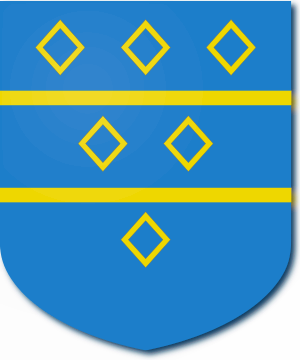Sir Thomas Darnell, 1st Baronet facts for kids
Sir Thomas Darnell, 1st Baronet (who died around 1638) was an English landowner. He became famous because of an important court case during the time of King Charles I of England. This case is often called the 'Five Knights' Case', but lawyers at the time knew it as Darnell's Case. It was a big moment in history because it challenged the king's power.
Contents
Sir Thomas Darnell's Life
Sir Thomas Darnell owned land in a part of England called Lincolnshire. He was given the special title of a baronet on September 6, 1621, at a royal palace called Whitehall. A baronet is a title of honor, like a knight, that can be passed down in a family.
The Forced Loan and Imprisonment
In March 1627, Sir Thomas was sent to a prison called the Fleet Prison. He was put there because he refused to pay a special tax that King Charles I demanded. This tax was called a "forced loan" because people were made to pay it, even if they didn't want to. The order to send him to prison was signed only by the king's top lawyer, the attorney-general.
The Famous Court Case
Sir Thomas and four other men, known as the 'Five Knights', believed they were being held unfairly. They asked for a special legal order called a habeas corpus. This order means that a person held in prison must be brought before a court to see if their imprisonment is lawful.
The court hearing for Sir Thomas began on November 15, 1627. However, while he was waiting, a new order for his arrest was signed by two of the king's advisors. This new order simply said that the king commanded his detention, without giving any specific reason for why he was being held.
Sir Thomas had a senior lawyer named John Bramston representing him. Sir Thomas asked for more time to prepare his case, and he was sent back to prison while he waited.
The cases for the other four men – John Corbet, Walter Earle, John Heveningham, and Edmund Hampden – continued. Their lawyers argued that the king could not just imprison people without a good reason. The king's attorney-general, Robert Heath, argued for the king.
On November 22, the chief judge, Nicholas Hyde, and his fellow judges decided that the king's orders were enough to keep the men in prison. This meant the king could imprison people without giving a clear reason, which was a big deal at the time.
Release and Later Life
Even though the judges sided with the king, the prisoners were eventually released on January 29, 1628. Sir Thomas Darnell was still alive in 1634, but he passed away sometime before 1640. He was married to Sara, who was the daughter of Thomas Fisher, but they did not have any sons.


